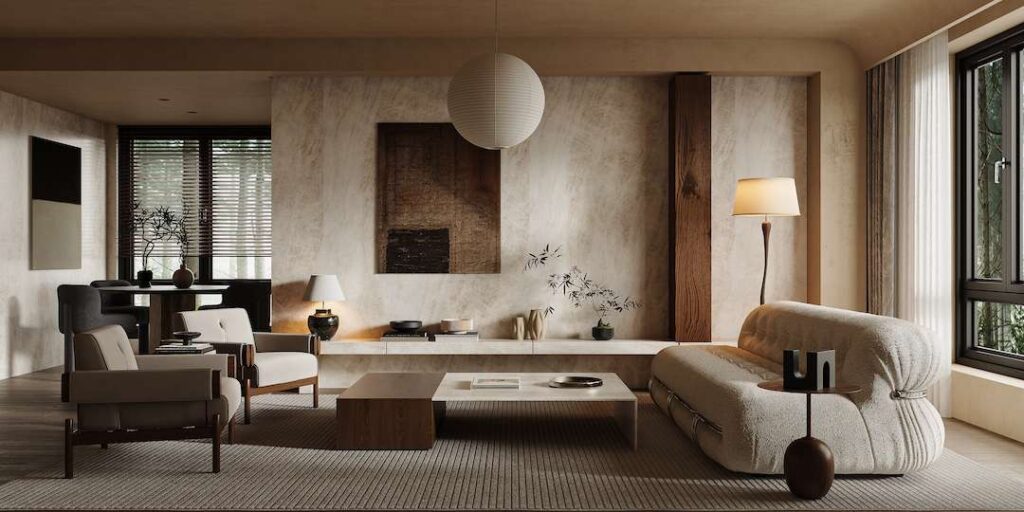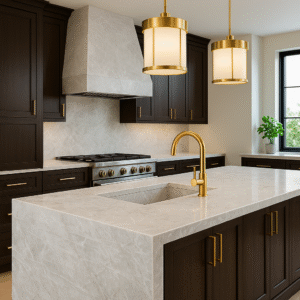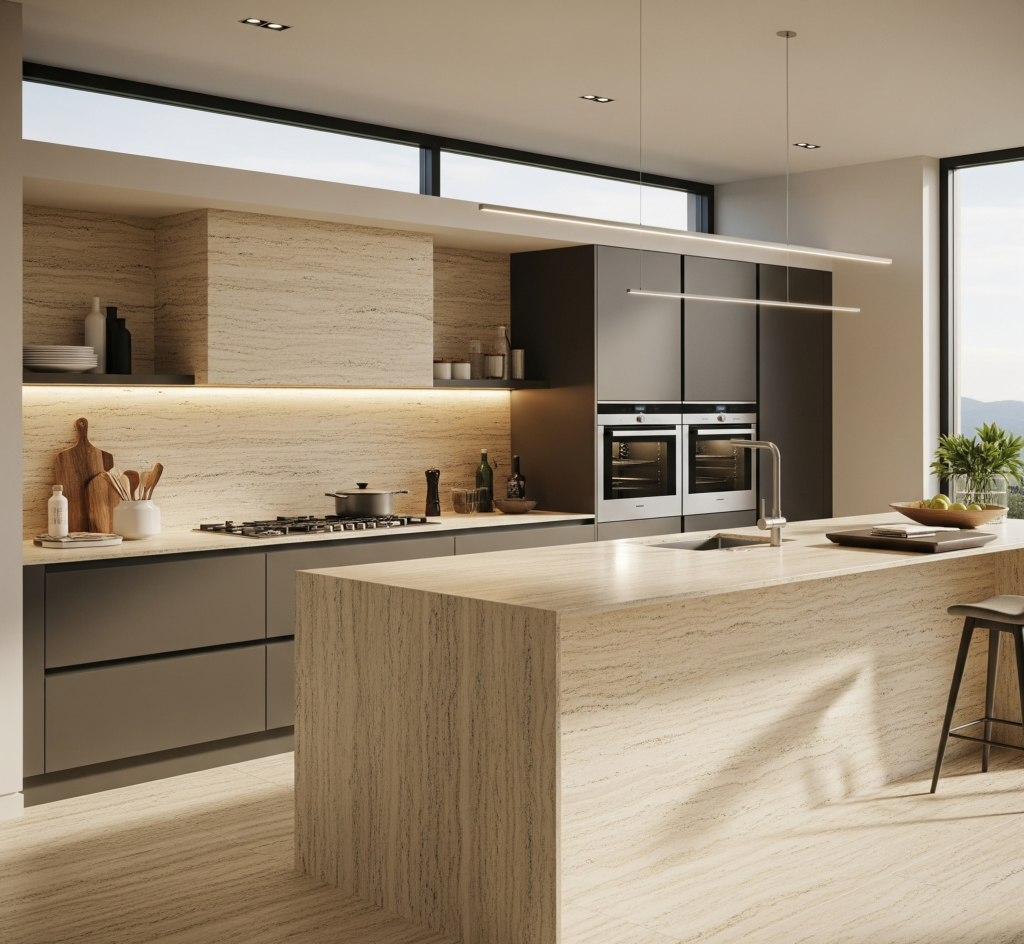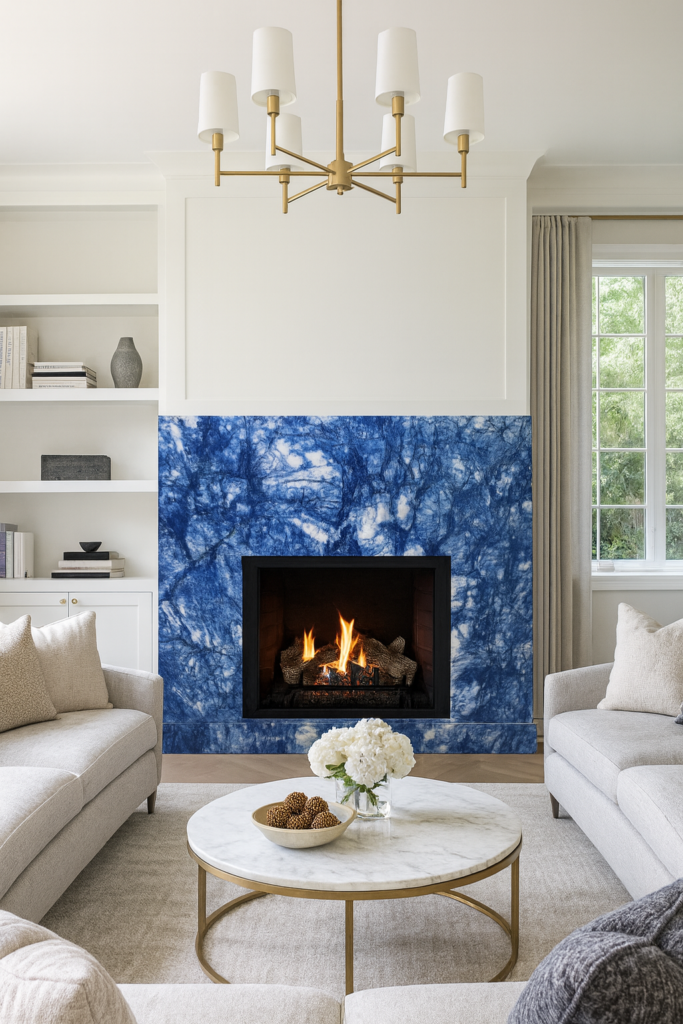Is Taj Mahal quartzite outdated? The answer lies in its reputation as one of the most luxurious and versatile natural stones available today.
With its warm, creamy hues and understated sophistication, Taj Mahal quartzite has become synonymous with elegance that never goes out of style.
This article explores why it remains a favorite in high-end homes, how it compares to other quartzites, and the latest trends shaping its use in contemporary design.
What is a Taj Mahal quartzite?
Taj Mahal quartzite is a natural stone quarried primarily in Brazil, celebrated for its soft beige to ivory tones and gentle, marble-like veining.
Its appearance offers the refined elegance of marble with the durability of quartzite, making it an increasingly popular choice among homeowners, architects, and interior designers.
This combination of resilience and beauty explains why it is consistently featured in luxury kitchens, spa-like bathrooms, and high-end living spaces.
For a deeper understanding of quartzite as a material, explore the Basics of Quartzite to see how it is formed and why it stands out compared to other natural stones.
Is Taj Mahal quartzite outdated?
The short answer is no. Taj Mahal quartzite is far from outdated, it has earned its place as a timeless stone that transcends fleeting design fads.
While interior design trends change year after year, natural stones with neutral palettes and elegant patterns continue to hold universal appeal. Taj Mahal’s creamy background with soft golden or gray veining complements a wide range of styles, from modern minimalism to rustic farmhouse and classic traditional.
Luxury quartzite, especially Taj Mahal, is not tied to a single trend but to the enduring qualities of natural beauty, durability, and versatility. According to industry experts, its ability to adapt to evolving design preferences ensures its relevance for decades.
Much like marble’s eternal presence in architecture, Taj Mahal quartzite remains a staple of timeless quartzite trends.
Differences between the types of quartzite
Not all quartzites are created equal. Each variety offers unique characteristics in terms of color, pattern, and finish.
Taj Mahal vs. other quartzites
- Taj Mahal quartzite: known for its soft beige and cream tones with subtle, flowing veins. It exudes understated elegance and works well in both light and dark interiors.
- White Macaubas Quartzite: features linear, gray veining on a white background, giving a more contemporary and crisp appearance.
- Cristallo Quartzite: offers translucent properties that allow for backlighting, creating a striking, luxurious effect.
- Fantasy Brown (often labeled quartzite but technically a marble/quartzite blend): popular for its swirling patterns but softer and less durable than Taj Mahal.
The luxury appeal of Taj Mahal quartzite
Taj Mahal quartzite has become synonymous with luxury living. Several factors contribute to its upscale reputation:
- Marble-like beauty without the fragility – Taj Mahal offers the soft, elegant veining associated with marble, but with significantly greater hardness and resistance to etching.
- Neutral, versatile color palette – Its warm ivory base and subtle veins adapt easily to a range of styles, from modern kitchens with sleek cabinetry to traditional interiors with ornate details.
- Exclusivity – Quarried in limited locations, Taj Mahal is considered a premium stone, often installed in luxury residences, hotels, and high-end retail spaces.
- Durability in daily use – Resistant to heat, scratches, and staining (when properly sealed), it combines practicality with refined aesthetics.
For those seeking a stone that makes a statement while still offering functionality, Taj Mahal embodies the perfect blend of luxury quartzite and timeless design.
Current trends in quartzite usage
Quartzite has surged in popularity as homeowners and designers look for materials that combine strength with elegance. Current trends highlight:
- Large kitchen islands: Taj Mahal quartzite’s expansive veining patterns make it ideal for statement islands.
- Waterfall edges: extending the stone vertically on countertops creates a seamless, dramatic effect.
- Open-concept living spaces: its neutral tones help unify kitchen, dining, and living areas with a cohesive flow.
- Bathroom retreats: used for vanity tops, shower walls, and flooring, Taj Mahal creates a spa-like atmosphere.
- Accent walls and fireplaces: beyond countertops, quartzite is now frequently used as a vertical design feature.
According to recent design reports, Taj Mahal quartzite remains at the forefront of Taj Mahal quartzite trends, as its neutral yet luxurious aesthetic pairs effortlessly with both contemporary and transitional styles.
Maintenance and longevity of Taj Mahal quartzite
One of Taj Mahal’s strongest appeals is its longevity. With proper care, it can maintain its beauty for decades:
- Sealing: Like most quartzites, Taj Mahal should be sealed regularly (once every 1–2 years) to protect against staining.
- Daily cleaning: Use a mild dish soap and warm water with a soft microfiber cloth. Avoid acidic or abrasive cleaners.
- Spill management: Clean up oils, wine, and acidic foods promptly to prevent potential etching.
- Protective habits: Always use cutting boards and trivets to reduce risk of scratches and thermal shock.
So, is Taj Mahal quartzite outdated? Absolutely not. Its refined elegance, neutral tones, and remarkable durability make it a timeless quartzite trend that continues to inspire homeowners, designers, and architects worldwide. Compared to other quartzites, it strikes the perfect balance between beauty and functionality, ensuring that it remains a luxury option for years to come.
Whether you are renovating your kitchen, designing a luxury bathroom, or searching for a natural stone that enhances your home’s value, Taj Mahal quartzite offers enduring elegance that stands the test of time.





